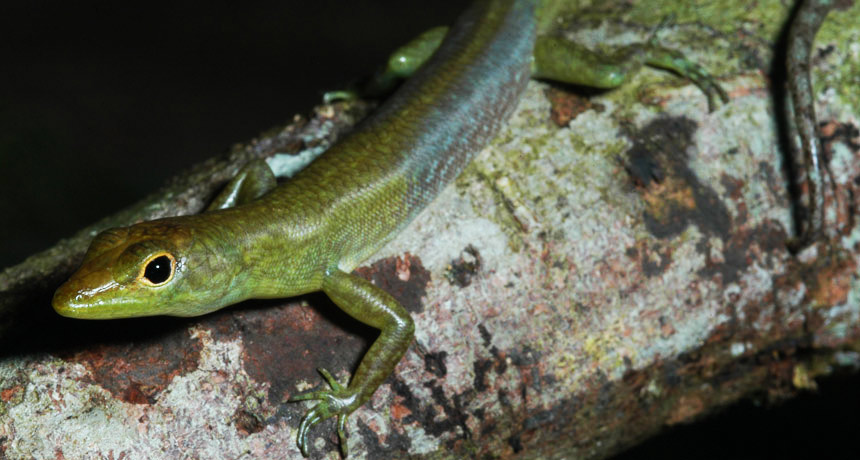Green blood in lizards probably evolved four times

Green blood is weird enough. But now the first genealogical tree tracing green blood in New Guinea’s Prasinohaema lizards is suggesting something even odder.
These skinks have been lumped into one genus just because of blood color, says biologist Christopher Austin of Louisiana State University in Baton Rouge. Yet they don’t all turn out to be close relatives. Green blood looks as if it arose four separate times in the island’s lizards, he and colleagues propose May 16 in Science Advances.
These lizards do have crimson red blood cells, but that color is overwhelmed by extreme buildups of a green pigment called biliverdin at levels that could kill other animals. Biliverdin forms as the oxygen-carrying hemoglobin molecules break down in dead red blood cells. In humans, biliverdin is converted into the bile that, in excess, causes yellow jaundice. An excess of the biliverdin itself can cause green jaundice. In one case study, levels reaching nearly 50 micromoles of biliverdin per liter of blood were deadly in humans. Yet Austin has found lizards thriving with 714 to 1,020 micromoles per liter (SN: 8/20/16, p. 4).
To figure out how such a peculiar trait evolved, he and colleagues compared segments of DNA and reconstructed the evolutionary history of green-blooded lizards and some close relatives. The greens did not emerge as a single cluster, but were scattered among the reds. The most probable explanation is that green blood, though rare, evolved independently multiple times, he says. The team is now working out the full sequences of lizards’ DNA building blocks and hoping to spot clearer evolutionary clues, such as particular mutations that helped red turn green. He hopes this research eventually will yield insights into human bile disorders.
High but harmless biliverdin hasn’t turned up in the blood of other reptiles, or in mammal and bird blood. Older papers, however, argue for high circulating biliverdin in some sculpins and other fishes in at least two more families, two frogs and insects such as tobacco hornworm caterpillars.
Whether the pigment offers any advantage is still a mystery. When Austin started studying lizards, he wondered if green blood would deter predators. “I tested the hypothesis by eating a few lizards myself and also feeding lizards to native birds and snakes,” he says. “No ill effects.” Now he’s musing that biliverdin might discourage blood parasites such as malaria pathogens.
And the taste of a green-blooded lizard? “Like bad sushi,” he says.